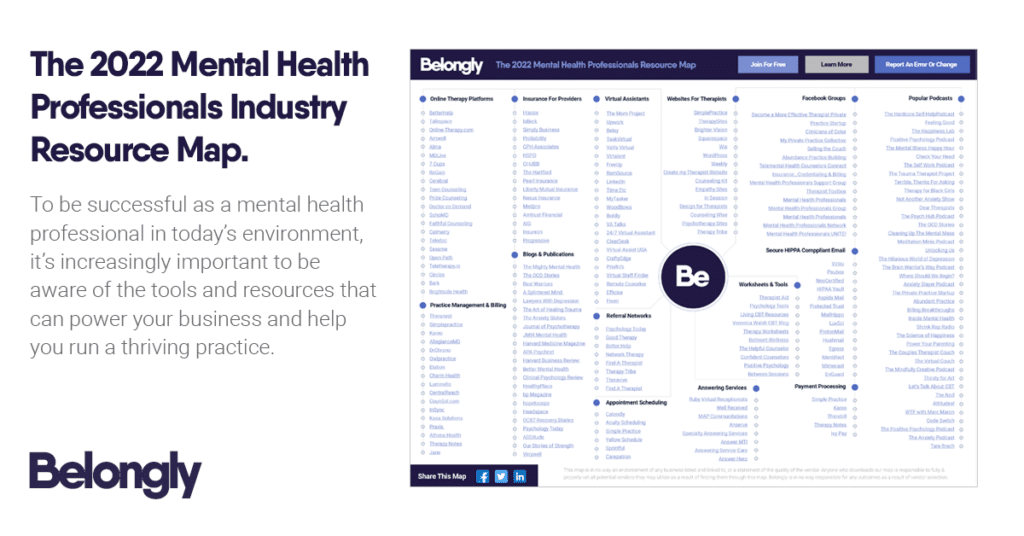It’s good to be busy, but it’s bad to be too busy. When therapists take on too much work, they risk feeling overwhelmed which can negatively impact their practice itself. As therapists, the goal is to help as many people as we can; but, there’s only enough time in a day to do so much.
That’s why you need to consider a waitlist.
This blog post will first define what a waitlist is. Then, we’ll go ahead and cover why you need a waitlist and the perfect waitlist system + best practices that you can start applying to your practice today.
What is a Waitlist?
A waitlist is a tool that therapists use when their schedules are completely booked. Potential clients will submit a form with their contact information, and then a therapist (or their team) will reach out when an opening is available or when a current client cancels an appointment.
Why You Need a Waitlist
Having a waitlist offers several advantages to both therapists and clients.
For the therapist, a waitlist is able to:
-
- Reduce the chance of experiencing burnout
- Promote a better work-life balance
- Obtain client information for future re-targeting purposes
- Weed out potential clients that may not be ready to commit to therapy
- Show potential clients that you are desired for your skills and expertise in therapy
For the client, a waitlist is able to:
-
- Keep the client informed and aware of their position at all times
- Help clients explore their treatment options at their own pace
- Automate update messages to clients through text, website portal, and/or email
The Perfect Waitlist System
Even the longest waitlist can fall short for a therapist if that waitlist is not managed well. That’s because the longer somebody stays on a waitlist, the less likely they’ll respond when called.
It’s imperative that you keep your client waitlist alive. What we mean by this is that you want to show your clients that you still care about them. Whether you plan to create a waitlist via email, website page, or application – this system is going to manage your waitlist well:
Step 1: Have a way to collect relevant client information
It’s important that you’re able to reach new clients when an appointment slot opens up. Whether it’s through a phone call or a form on your website, aim to collect these pieces of information:
- Client’s name, number, and email
- Their preferred therapist
- Purpose of calling
- Date of client’s original call
Step 2: Assign one person to waitlist duties
If someone’s in charge of waitlist duties each week, your waitlist will never be neglected. This person will be trained to manage waitlists and will update spreadsheets in accordance with new information’s obtained throughout the week.
Step 3: Follow up with the waitlisted
Keeping your waitlist short and accurate is the best way to ensure that your waitlist is alive.
Every month, have your waitlist manager reach out to all the people on your waitlist. Give the person an update, offer alternatives if available, and then ask them if they’d like to remain on the waitlist. This proactive approach shows individuals on the waitlist that you still care about them.
If they do decide to continue waiting, leave them on the waitlist. If they decide to look elsewhere, cross them out on your spreadsheet. Rinse and repeat steps 1 through 3 on a regular basis (ideally, once every month) so that your waitlist isn’t just a bunch of expired leads.
Waitlist Best Practices to Start Implementing
This last section shares our favorite waitlist best practices to help you make the most out of having a waitlist and to keep potential clients around for longer:
Internal communication is a must: The waitlist manager and clinicians need to communicate often. The waitlist manager will keep clinicians updated on the number of people on their waitlist, while the clinician keeps the waitlist manager informed on any open appointments they may have.
Give people on your waitlist things to do: Even if you can’t immediately help those on your waitlist, you can offer them value. If you have a blog, point them to pieces that might be beneficial for them. You can also create free worksheets and other freebies to keep your potential clients occupied while they wait.
Make a Referral List: It may seem odd to promote your competition, but hear us out. Having a referral list shows that you want people to get the treatment they need, even if it’s not with you. A referral list positions your practice on a positive note.
Keep Reading
Want more? Here are some other blog posts you might be interested in.










